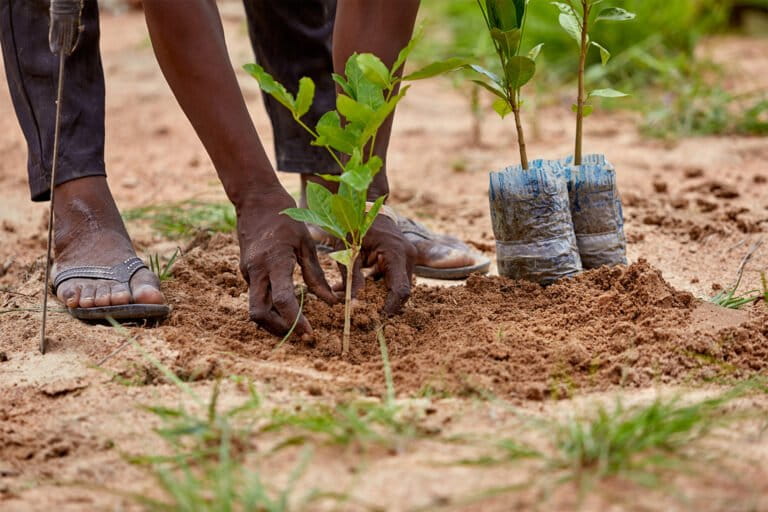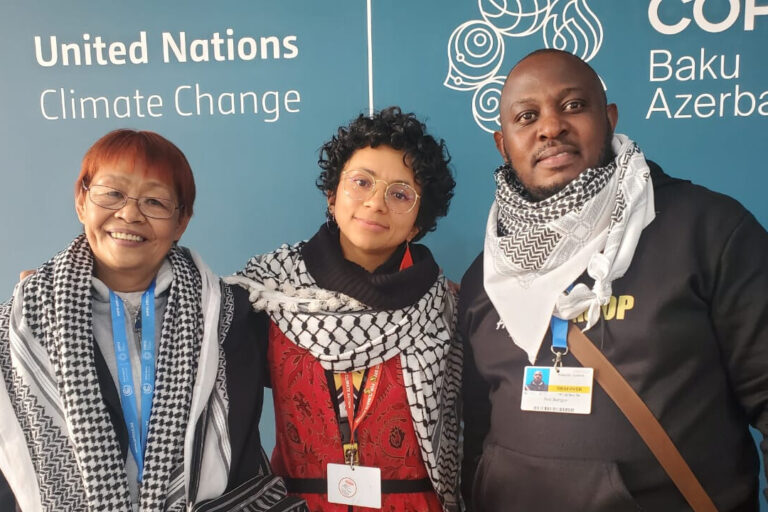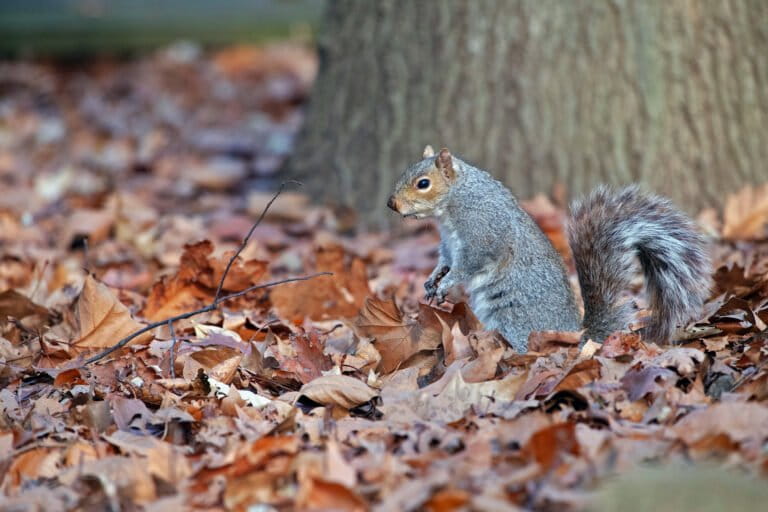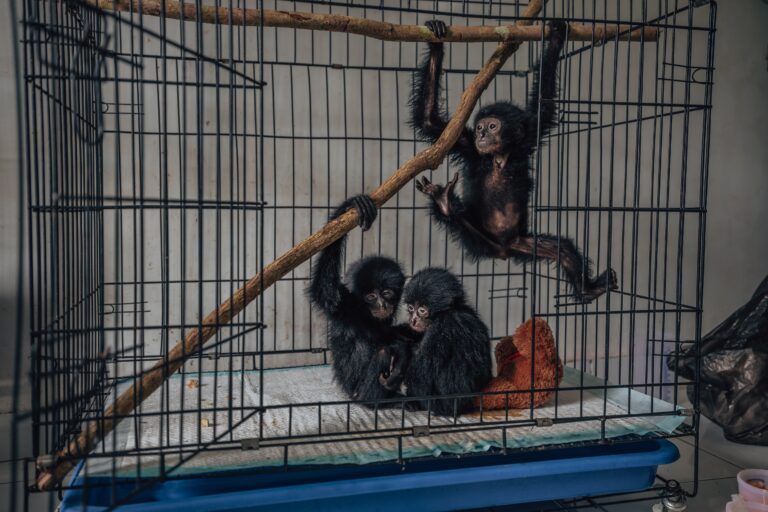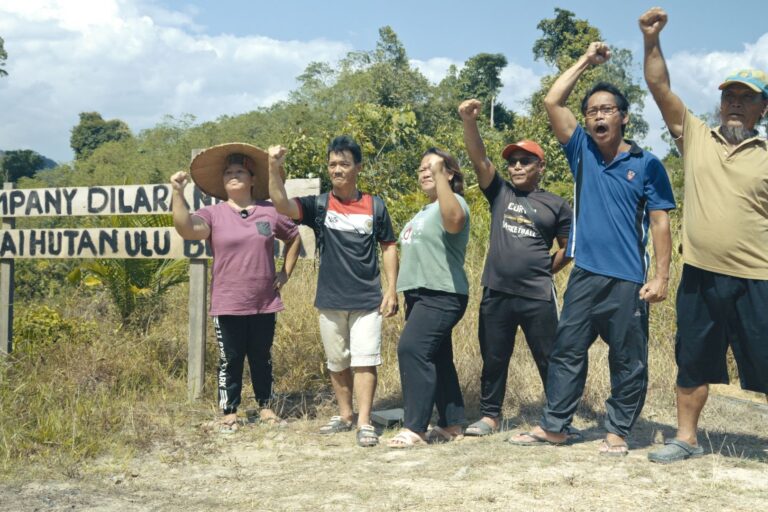- Trees can rapidly remove carbon from the atmosphere, so climate change mitigation efforts often center on reforestation efforts.
- This should not invite the planting of monocultures, but rather a diversity of native trees adapted to the areas being reforested, which support biodiversity.
- Native tree reforestation can also support local communities: “People can be employed to play the role of the spider monkey, the tapir, and the toucan,” in replanting forests, says botanist Ruthmery Pillco Huarcaya who is currently working to propagate the critically endangered rainforest species, Pleodendron costaricense.
- This article is a commentary. The views expressed are those of the author, not necessarily Mongabay.
Hanging in harnesses 80 feet above the rainforest floor, I realize Ruth and I might be the first humans to have ever been in the canopy of this living fossil, Pleodendron costaricense. This extremely rare tree is a member of the cinnamon family and part of an ancient lineage.
Although large, this tree only first came to the attention of botanists in 1998 and was not formally described until 2005. It has never been propagated. Only four mature fruit-producing individuals have ever been found. So, Ruth and I are going to extreme measures to try to save it from extinction by climbing into the canopy to collect its fruits and seeds.
Ruthmery Pillco Huarcaya is an Indigenous Peruvian botanist – passionate about saving rare and threatened rainforest trees – and is the botanical manager at Costa Rican NGO Osa Conservation, as well as a student at Kew Botanical Gardens. I, however, am a tree climbing wildlife ecologist focused on the animals that live up in the rainforest canopy, so I have a couple of camera traps in my backpack to try and discover what animals eat the fruits and disperse the seeds.

If we can propagate the tree and ensure that its wild seed dispersers can do their job, we might be able to prevent the extinction of this rare beast. Pleodendron costaricense is what ecologists classify as a “Critically Endangered” species – the most extreme case of rarity, other than “Extinct in the Wild.”
Renowned botanists and describers of the species, Hammel and Zamora, refer to it as a “living dinosaur that harbors information about the history of the Earth.” This means that this living rarity closely resembles ancient trees otherwise known only from the fossil record. And despite most of the species of the ancient forests going extinct, this tree species persisted. Once gone, we lose a precious window into the ancient past.
The tree we are climbing was identified by Leonardo Alvarez Alcazar – a skilled botanist from the Technological Institute of Costa Rica – during a series of botanical surveys that Ruth and her field team carried out across some of the hardest to reach, rugged parts of the Osa Peninsula in Costa Rica’s South Pacific. When you look at maps of where most species have been recorded, they are often along roadsides and easy to reach areas, yet the remotest places that remain free from logging have also never been surveyed biologically.
The team hikes into these voids, each carrying 20kg rucksacks packed with jungle hammocks, survey equipment, and food. From sunrise to sunset each day, they carry out intensive surveys, identify trees and collect botanic specimens – sometimes climbing into the canopy to retrieve them – and prepare their samples using headlamps at night. If they are lucky, they wash in a stream every couple of days and hope that the carbohydrate heavy food is enough to sustain them for the weeklong expeditions.
These surveys are part of Osa Conservation’s effort to help with the Global Tree Assessment, an ambitious endeavor led by Botanical Gardens Conservation International and supported by Fondation Franklinia, to complete conservation assessments for all the world’s tree species – roughly 60,000 species.
This represents an enormous task and assessments exist for just about 60% of the world’s known tree species. Over 39% of all tree species have now been included in the IUCN Red List of Threatened Species, 38% of which are globally threatened. “It’s essential that we complete the task of assessing the conservation status of these trees,” Ruth says. “Soon, before species that we didn’t even realize were under threat – or that even existed – are gone forever.” Costa Rica has 2,677 known tree species, almost 5% of the global total, with 1,758 (66%) still to be assessed. Ruth’s teams’ job is to focus on those of the Osa Peninsula.

The rainforest of the Osa Peninsula in the South Pacific of Costa Rica is renowned for its high level of biological richness packed into a tiny area. Over a quarter of Costa Rica’s trees can be found on the peninsula – an area just 3.5% of the country’s total land surface. This impressive species richness means Pleodendron costaricense is not unique — one species recently collected by the team is likely new to science. Its flowers will be valuable in producing the scientific description and give it a name for the first time.
Another species – the blood tree, Paramachaerium gruberi – so named for the red sap that oozes from any cuts to the bark and outer tissues, is known from just one densely (human) populated location in Panama, and from a single ridge line on the Osa Peninsula.
In addition to a highly restricted distribution outside of any national park, it is estimated that there are fewer than 250 mature individuals in the wild. It is now formally listed as Critically Endangered thanks to the team’s assessment on the International Union for Conservation of Nature (IUCN) Red List of Threatened Species.
“Carrying out field surveys and Red List assessments is just the beginning,” says Ruth. “Once we know which trees are threatened, we need to protect them, and develop strategies to save them. We should know where the mature mother trees are, protect them, understand their life cycles, and learn how to propagate new trees so that our restoration efforts can increase wild populations.”
In addition to establishing the threat status of the extremely rare Paramachaerium gruberi, the botanical team collected bags of seeds and have over 500 saplings germinating in their tree nursery, where a third of the trees produced are rare and threatened species.
Tree planting efforts are ramping up all over the world. The Word Resources Institute (WRI) for example, launched the 20×20 Initiative to restore 20 million hectares of land by 2020, leading 17 countries to commit to 53.2 million hectares – an area roughly the size of France. Colombia alone recently announced their goal to plant 180 million trees by 2022.
See related: Without planting more trees in the tropics, we can’t fix the climate

Trees are our best technology currently in existence that can rapidly remove carbon from the atmosphere and while this will not halt climate change alone, it is a valuable complementary tool to have in our greenhouse.
Although these commitments are promising and impressive in scale, I raise a cautionary note. Past tendency has been to plant economically attractive monocultures – vast swaths of forests of a single species – poor for biodiversity, often both an ecological and economic disaster.
Jean-Christophe Vié, the Director General of Fondation Franklinia, explains, “Planting trees may look like an appealing solution to decision makers eager to meet targets under the Paris agreement, but such initiatives are being implemented without proper consideration for biodiversity. In many cases we are displacing native plant diversity, converting natural ecosystems, and reducing the availability of critical resources such as water. The priority should be the preservation of natural forests, by far the most efficient way to capture CO2 as well as to preserve biodiversity. A distinction should be made between a tree plantation and a forest and the use of indigenous and, where possible, threatened tree species should be promoted.”
A popular alternative to monocultures – attractive because it’s cheap – is to simply do nothing. And while ‘letting nature do the work’ might be effective when close to an ancient old growth forest with plentiful source seeds and abundant wildlife to move seeds around, many sites are isolated and severely degraded. Under such conditions, complete recovery of old-growth forest community diversity and structure can be painfully slow, if ever possible.
I have spent years hiking and working in rainforests throughout the tropics, and while naturally regenerating forests have potential over degraded cattle pastures or monocultures, species-rich old growth ones remain unsurpassed in their size, complexity, and levels of rarity. Many secondary forests are dark, dominated by small-seeded wind-dispersed pioneer tree species, and are brimming with tangles of suffocating vines, especially where there is little wildlife to disperse fruits and seeds.
But there is an attractive alternative. A technique that is being applied by Ruth and Osa Conservations botanical and restoration team. “People can be employed to play the role of the spider monkey, the tapir, and the toucan,” says Ruth.

Dr Andrew Steer, president of the WRI, says “Restoration will be absolutely essential for countries to hit their emissions targets, while also delivering huge benefits for the rural poor.” Jobs such as seed collecting, tree propagating, and planting of species-rich forests can be created to kickstart rural economies and build wildlife corridors between protected areas. It is this connectivity that will ensure the resilience and health of the ecosystems that we depend upon.
The concept of building resilience and adaptability through species-rich ecosystems is well documented for grasslands, and a recent study published in Nature suggests that this could be true for tropical forests. This means that having more species in the forests of our connectivity corridors – such as those that are rare, threatened, and endemic – will allow rainforests to be more adaptable to future uncertainties, such as pest and disease outbreaks, and climate change. The richness provides more opportunity for adaptation and our rare trees might be the ones that have the best resilience in a future climate.
In Costa Rica’s South Pacific, the Amistosa corridor is one such rural connectivity landscape that joins the Osa Peninsula’s renowned Corcovado National Park to one of the “Five Great Forests” of Mesoamerica – La Amistad International Peace Park – along the frontier of Costa Rica and Panama. It is in this corridor that Ruth’s team and others are working in to plant rich diverse forests, to build a climate-resilient conservation landscape – from ocean to mountaintop.
I recently visited the nursery where Ruth and her team are working hard to produce trees for the season’s planting. They have since found two more rare Pleodendron trees, taking the world’s known population to six individuals. We check the footage from the camera traps we gathered from the living dinosaur. None of Osa’s four species of monkey are eating the fruits.
What we did find was a family of white-faced capuchin monkeys dousing their fur in the sap of the green fruits, in a 30-minute frenzy right in front of camera – presumably, a form of insecticidal shampoo. Only the nocturnal, canopy-living kinkajous and olingos were observed feeding on the tree’s ripest fruits.
“It’s wonderful to see the Pleodendron’s dispersers active and doing their job in the forest,” says Ruth. “But getting the seeds to germinate has been testing. At first all the seeds were being eaten by ants and cockroaches, so we built a mesh housing to keep them out, but still nothing grew. Next, we tried many ways of preparing the seeds, all failing… except for one. A type of acid we used to bathe the seeds before planting worked!”
Ruth proudly opens the protective enclosure and shows me a tray containing about 40 tiny saplings. Thanks to the team’s efforts, Pleodendron has a chance to come back from the brink of extinction, and these rare saplings will become part of Costa Rica’s regenerating, rich, and resilient forests.
Andrew Whitworth is executive director of Osa Conservation, which receives funding from Fondation Franklinia, and is an affiliate researcher with The Institute of Biodiversity, Animal Health & Comparative Medicine at the University of Glasgow, Scotland.
Related audio from Costa Rica: The sounds of tropical katydids and how they can benefit conservation










